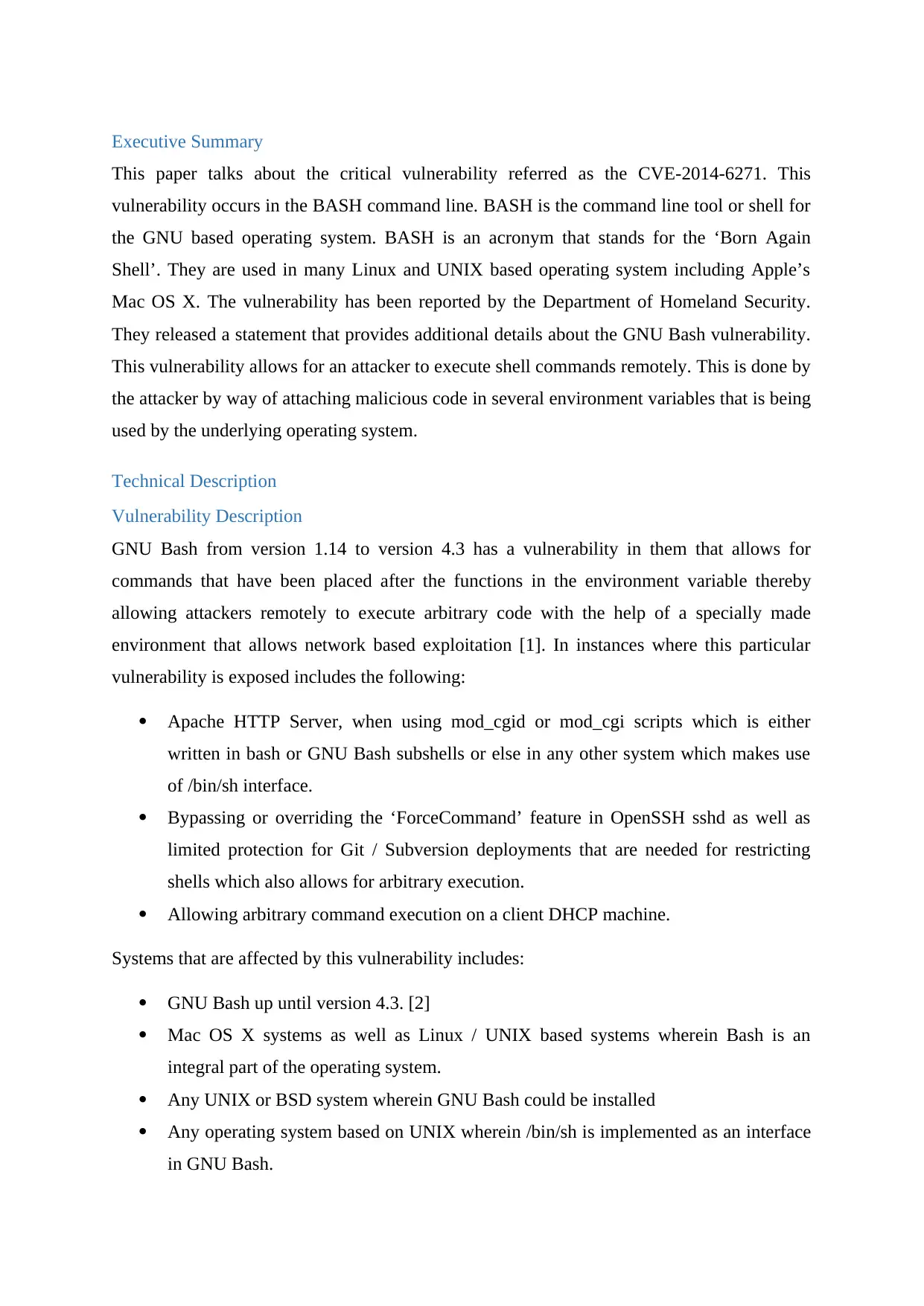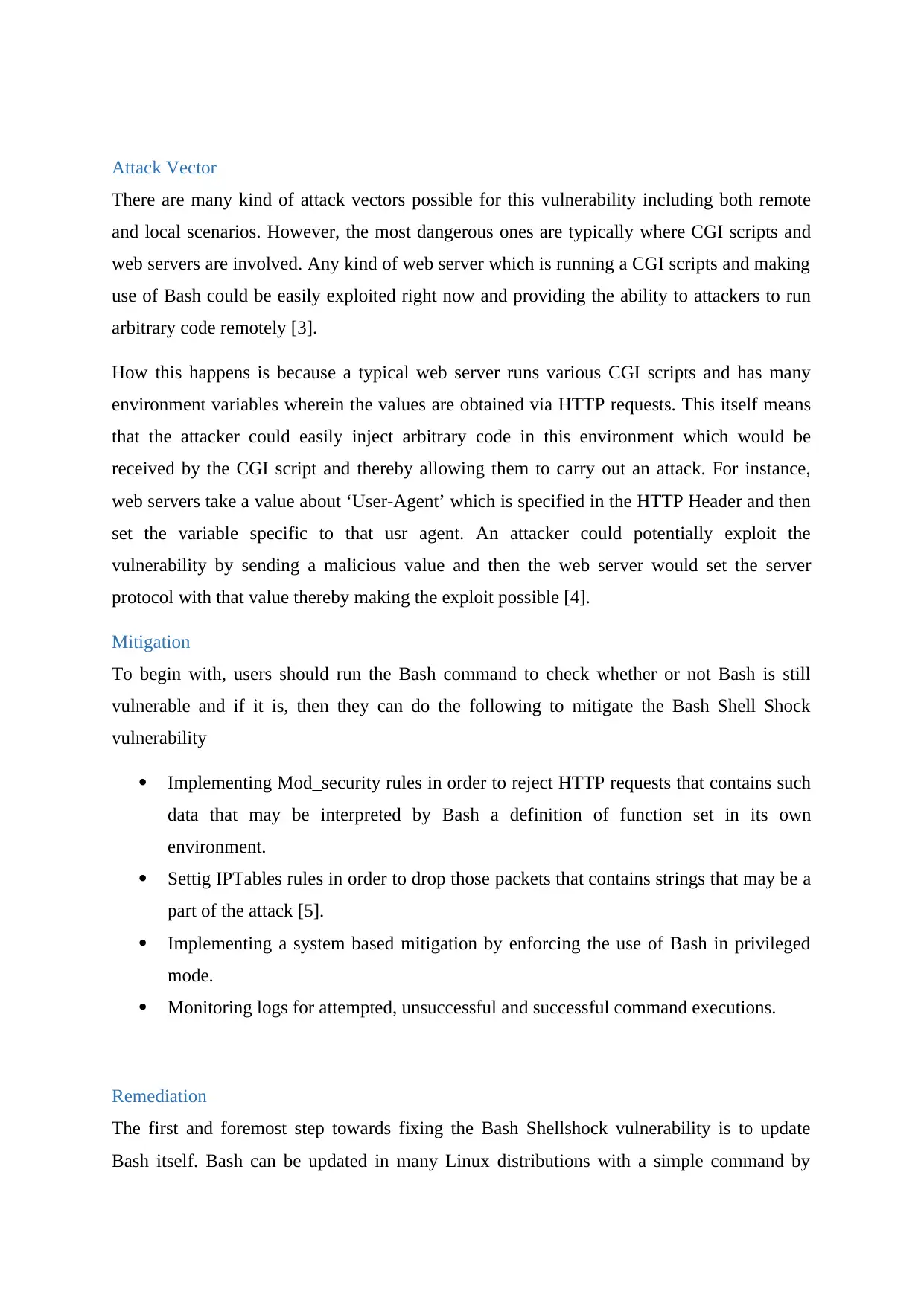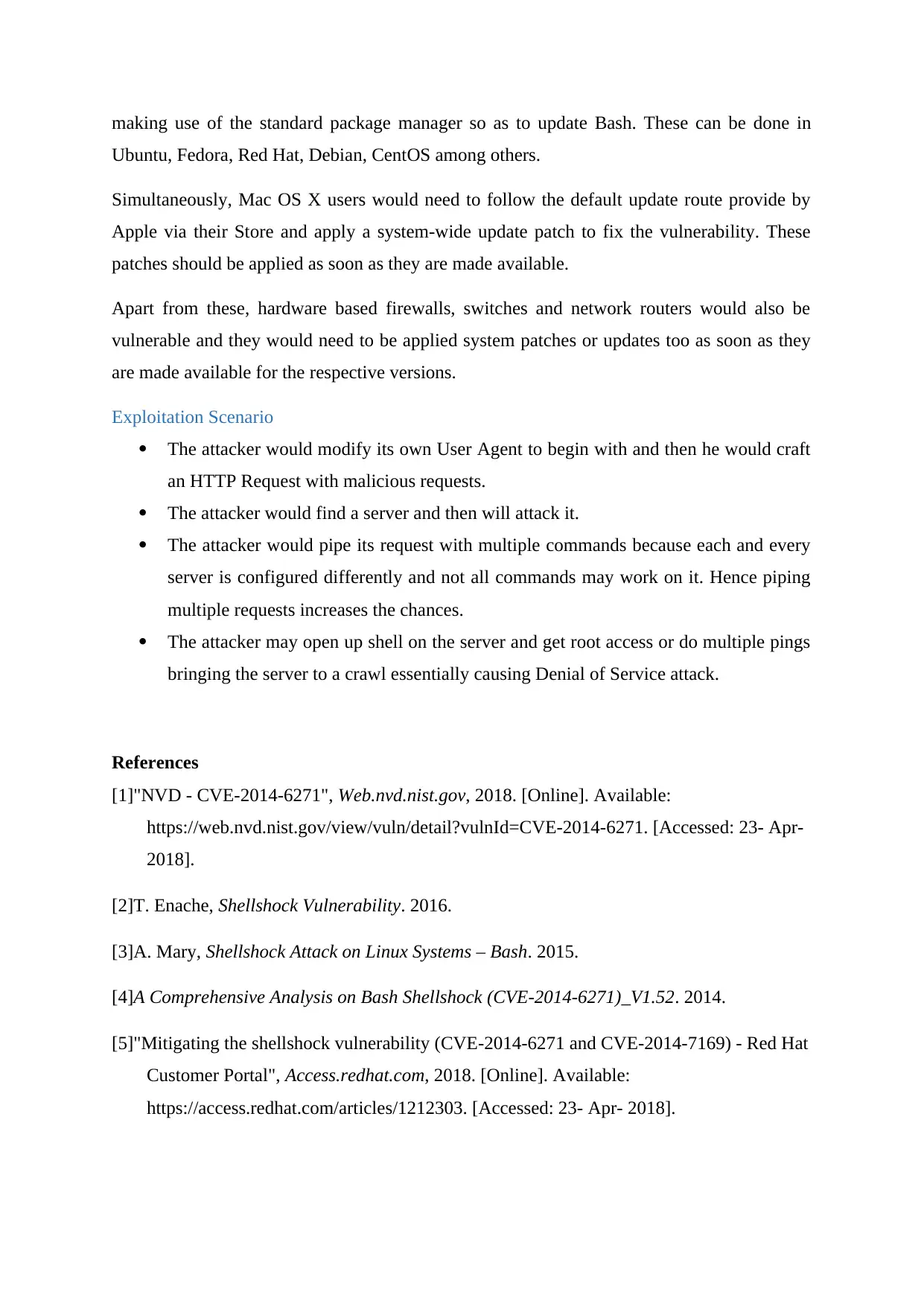Analysis of CVE-2014-6271: The Bash Shellshock Vulnerability Report
VerifiedAdded on 2019/09/19
|3
|1031
|296
Report
AI Summary
This report provides a detailed analysis of the CVE-2014-6271 vulnerability, also known as the Bash Shellshock vulnerability. The report begins with an executive summary, which introduces the vulnerability and its impact on various systems, including Linux and UNIX-based operating systems and web servers using CGI scripts. The technical description delves into the vulnerability's nature, explaining how attackers can execute arbitrary code remotely by injecting malicious code into environment variables. The report outlines various attack vectors, particularly those involving CGI scripts and web servers, and explains how attackers can exploit the vulnerability by manipulating HTTP requests. Furthermore, the report discusses mitigation strategies, such as implementing Mod_security rules, setting IPTables rules, enforcing privileged mode for Bash, and monitoring logs. The remediation section emphasizes the importance of updating Bash and applying system-wide patches. The report concludes with an exploitation scenario, detailing how an attacker might exploit the vulnerability to gain access to a server and potentially cause a denial-of-service attack. References to relevant sources are also included.
1 out of 3










![[object Object]](/_next/static/media/star-bottom.7253800d.svg)